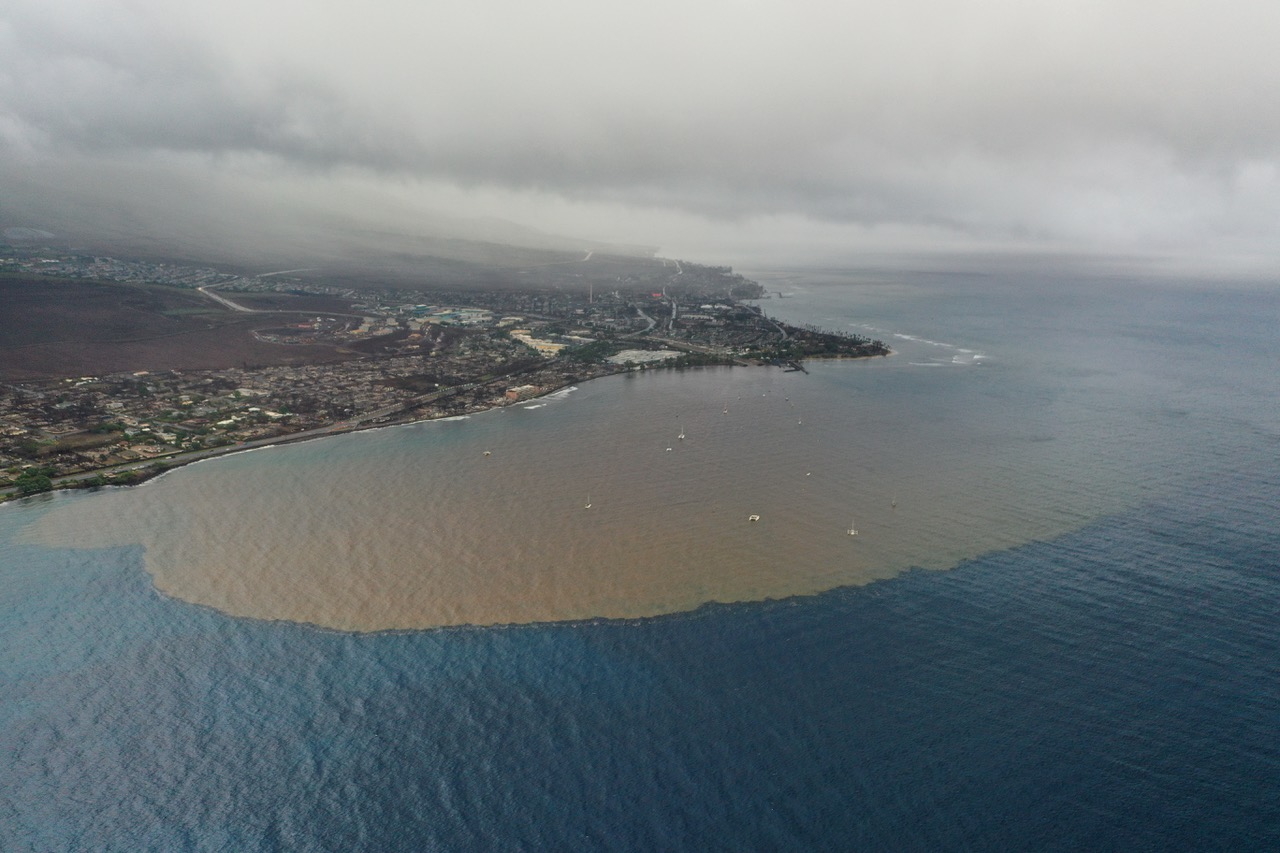
photo credit: Mark Deakos
In the months following the 2023 Lāhainā Fires on Maui, there were many questions about the safety of water at the beach near the burn zone and along the entire west side of the island. There were federal and state agency-led programs to monitor the air, soil, and ash for fire-related contaminants. Academic researchers were also monitoring water quality to determine the potential impacts of the fires on the coral reef ecosystems in the near-shore waters. Despite these efforts, no one was answering the question that the Maui Chapter was receiving over and over again from the local community — “Is it safe to swim yet?” More than that, the west side of Maui is popular for activities like paddling, surfing, fishing, diving, and snorkeling. Yet, five months after the Lāhainā Fires burned in August 2023, there was no water quality data available to let people know if it was safe to return to the water. To meet this need, Surfrider developed the Maui Post-Fires Coastal Water Quality Monitoring Program.

Maui Fire Response Coordinator, Hanna Lilley, collects water to analyze for heavy metals and other fire-related contaminants.
On January 10, 2024, water samples were collected in brown water conditions from eight sites on the west side of Maui, just after the first heavy rain hit this coast following the Lāhainā Fires. Samples were analyzed for enterococcus, fecal indicator bacteria, and fire-related contaminants, including heavy metals and PAHs (Polycyclic Aromatic Hydrocarbons). We did not find evidence during our initial sampling run of fire-related contamination that poses a risk to human health from ocean recreation. Surfrider sampled the same sites again in June during dry weather, along with a control site further down the coast. Once again, we did not have any test results that exceeded safe benchmarks for recreation. While finding appropriate human health/recreational guidelines for fire-related contaminants was challenging, nearly all of our test results were also well below the aquatic life criteria, which are typically much lower than recreational standards. The one exception was the concentrations of copper that exceeded aquatic life criteria in Lāhainā Harbor, which was most likely a pre-existing problem, as copper-based products are heavily used to clean boat hulls.
As a result of these two sampling events, the Maui Chapter was very pleased to be able to share valuable water quality information on the island, allowing people to safely return to the water and recreate. See Hawai'i Department of Health News Release. You can learn more about the Maui Post-Fires Coastal Water Quality Monitoring Program and view our results and testing protocols on the Surfrider Foundation Maui website.

Hawai'i Department of Health staff facilitate access to the burn zone on West Maui for Surfrider Foundation Maui.
